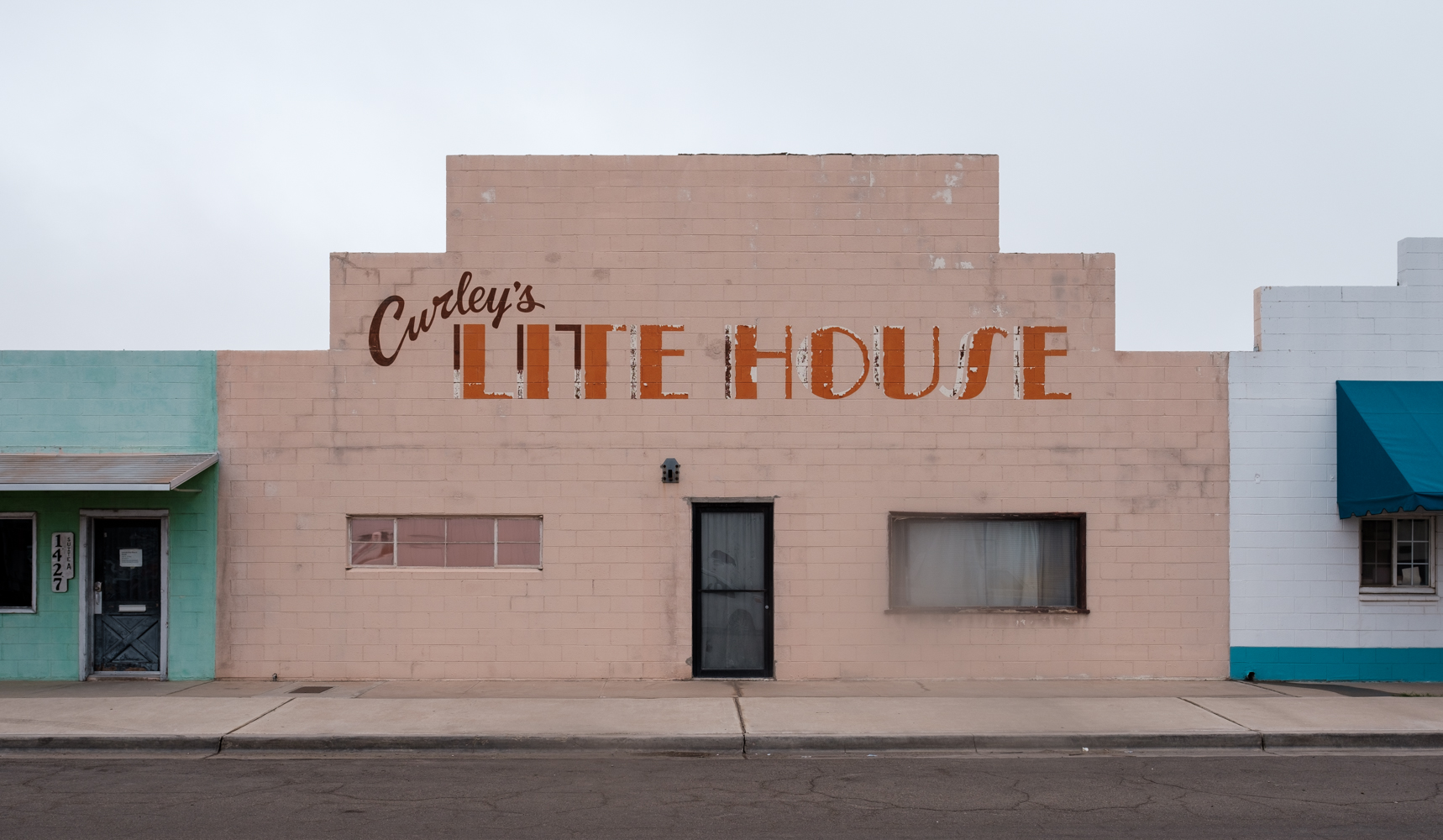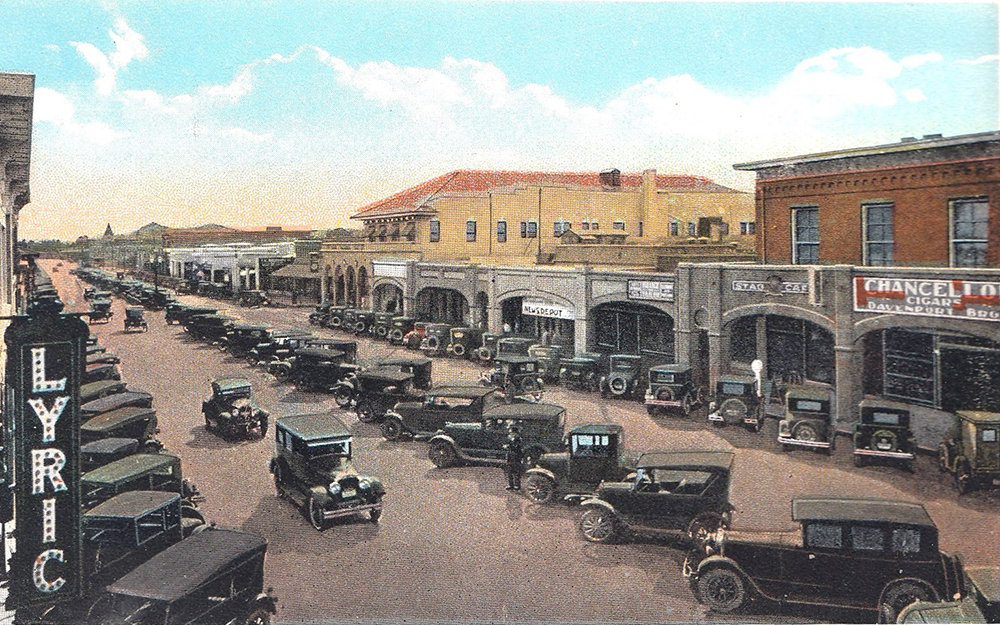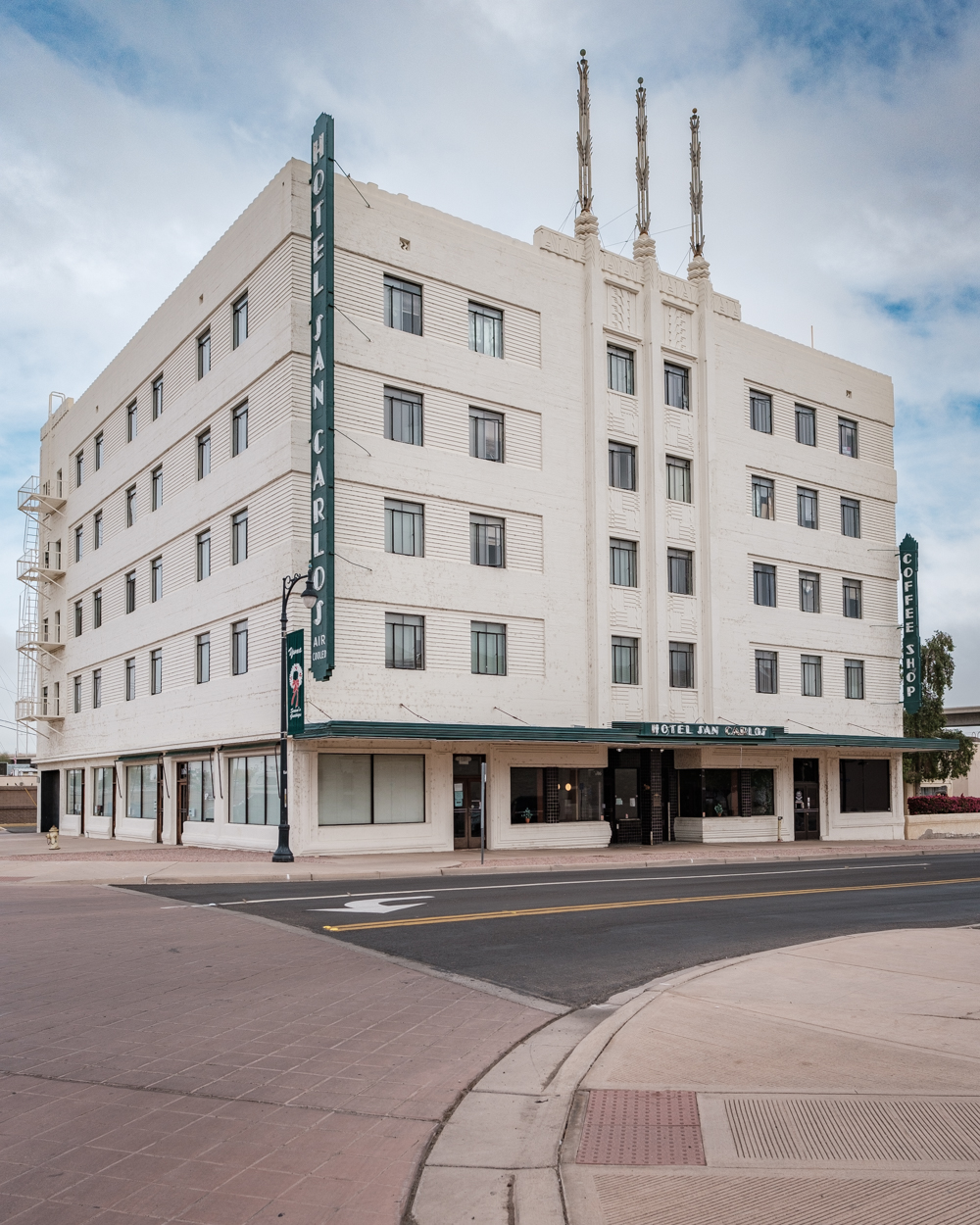Yuma / Architecture
 I ran across this storefront on a recent stop in Yuma Arizona. I haven't spent much time exploring the town. It has basically been a gas stop on the way to Phoenix or Tucson. This time I decided to hit a couple antique malls. Unfortunately not much to report on the junk front, but I did see some architecture.
I ran across this storefront on a recent stop in Yuma Arizona. I haven't spent much time exploring the town. It has basically been a gas stop on the way to Phoenix or Tucson. This time I decided to hit a couple antique malls. Unfortunately not much to report on the junk front, but I did see some architecture.
This is Main St. in the late 1800s. Yuma (formerly known as Colorado City) was on the wagon trail to California and served as a logistical point for the 1846 war with Mexico and then the Civil War. The gold rush of 1849 brought more than 60,000 people with gold fever through town and really put it on the map. The railroad came in 1877 and the route became the main line of the Southern Pacific which led to large investments into Yuma's infrastructure.
Source: University of Southern California. Libraries and California Historical Society
A major flood in 1916 wiped out much of the town's buildings. Hundreds of structures were lost. It was so bad that Mayor Charles C. Moore dropped dead of heart failure during the panic after four miles of the levees holding the Colorado River failed.
Much like the wagon trail and the railroad, the building of U.S. Route 80 or the Ocean-to-Ocean Highway was a boon for Yuma.
Image: Visit Yuma
 Most of the building done to replace the washed out town was done is Spanish Colonial Revival style. A major exception came with the Hotel San Carlos (1930) by Dorr and Gibbs (Louis L. Dorr and Dwight Gibbs). Even though the country was in the midst of the Great Depression, Yuma was benefiting from the construction of the Imperial Dam and All-American Canal.
Most of the building done to replace the washed out town was done is Spanish Colonial Revival style. A major exception came with the Hotel San Carlos (1930) by Dorr and Gibbs (Louis L. Dorr and Dwight Gibbs). Even though the country was in the midst of the Great Depression, Yuma was benefiting from the construction of the Imperial Dam and All-American Canal.It is situated a the end of Main St.
The hotel was the center of the social life and even attracted some celebrity guests.
The lobby of the hotel shortly after it opened.
Source: Mott-Merge Collection via California State Library
A room in the hotel shortly after it opened.
Source: Mott-Merge Collection via California State Library
The Lutes Casino on Main St. looks like a modern structure.
Though, as evident here, this was a mid-twentieth century modernization of an existing building.
The original structure was built in 1901 by the Molina Investment Co. Jose Molina was a cattle rancher and president of the Yuma National Bank. The New York Store followed and sold groceries downstairs with the Central Hotel upstairs. McCaw's Casino Billiards Parlor then took over in 1920s. R.H. Lutes then purchased it, with his son Bob taking over in 1960.
Source: Yuma County Library
Source: Yuma Morning Sun, 1923
There are a number of classic 1950's buildings sprinkled along Main St.
Daniel's Jewelers opened in 1947. More recently, it was an antique store called Memory Lane.
As far as notable architects, Carl Maston designed a FedMart store in 1964. The San Diego discount chain was started by Sol Price in 1954.
Source: Carl Maston Papers, 1946-1989 (collection), University of Southern California
All FedMart locations went out of business by 1982, however this big box lives on as a Staples.
The portico also lives on!
Source: Google Maps
Did you know that Yuma residents are called Yumans?
I plan to go back soon.
















